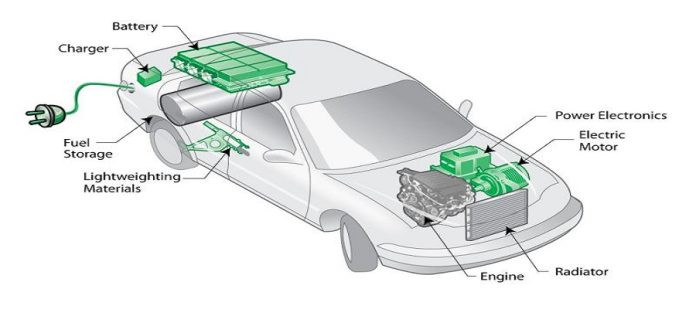The Hybrid Vehicles Market size is estimated to surpass US$ 232 Billion in 2023 and is anticipated to hit a valuation of US$ 1.6 Trillion by 2033. The hybrid vehicles market share is predicted to thrive at an astronomical CAGR of 21.6% from 2023 to 2033.
The expansion of EV infrastructure, including charging stations, is strongly related to the growth of the hybrid vehicle industry. By allaying worries about limited electric range, the charging infrastructure develops and becomes more accessible, which increases the perceived value of hybrid vehicles. The industry is further boosted by the growth of charging networks, which encourage buyers to think about hybrid cars as a realistic choice.
The awareness of price hikes in the future and fluctuating gasoline costs have a big influence on consumer behaviour. Due to their improved fuel efficiency and decreased reliance on oil, hybrid cars provide an alternative to fossil fuels. The cost-saving potential of hybrid vehicles draws increased customer interest as gasoline costs rise, propelling industry growth.
In order to store and distribute electric power, hybrid cars rely on cutting-edge battery technology. Hybrid vehicles are now more efficient, dependable, and cost-effective because of recent advancements in battery technology, including greater power densities, longer life spans, and lower prices. By addressing issues with battery performance and lowering the overall cost of hybrid vehicles, advancements in battery technology additionally boost the market for hybrid vehicles. Additionally, hybrid vehicle battery diversity expands the market and draws in more buyers.
Key Takeaways:
- In 2018, the global market size stood at US$ 90,798.9 million.
- The market expanded at a CAGR of 20.7% from 2018 to 2022.
- In 2022, the global market size stood at US$ 192,712.4 million.
- The United States captured 30.4% of global market shares in 2022.
- India captured 22.8% of global market shares in 2022.
- China captured 24.3% of global market shares in 2022.
- The United Kingdom captured 22.2% of global market shares in 2022.
- The hybrid vehicles segment captured 32.2% of global market shares in 2022.
- The passenger cars segment acquired 27.6% of global market shares in 2022.
Competitive Landscape
Over the last few years, there has been an increasing number of acquisitions and growth strategies to increase the development and production of hybrid vehicles. Major firms are also working on technology development. Contracts and agreements, new product developments, and partnerships are some of the growth strategies used by key firms to strengthen their market positions. Prominent automakers like BMW, Honda, and Toyota are also focusing on developing plug-in hybrid vehicles to expand their customer base.
Recent Developments Observed by FMI:
- Nissan just unveiled the fourth iteration of the X-Trail. The Nissan X-Trail is scheduled to make its debut in the middle of 2023. Strong Hybrid and Mild Hybrid drivetrains are expected to be offered for Nissan’s X-Trail SUV. The car is expected to cost around INR 40 lakhs when it goes on sale.
- The Nissan Qashqai SUV is built on the CMF-C platform, which was developed in collaboration with Renault. The Qashqai is anticipated to be powered by a 1.3L gasoline engine and a mild hybrid powertrain. The automobile is projected to cost around INR 30 lakhs when it goes on sale. Because the Qashqai is likely to go on sale after the Nissan X-Trail, we may expect to see it around late 2023 or early 2024.









